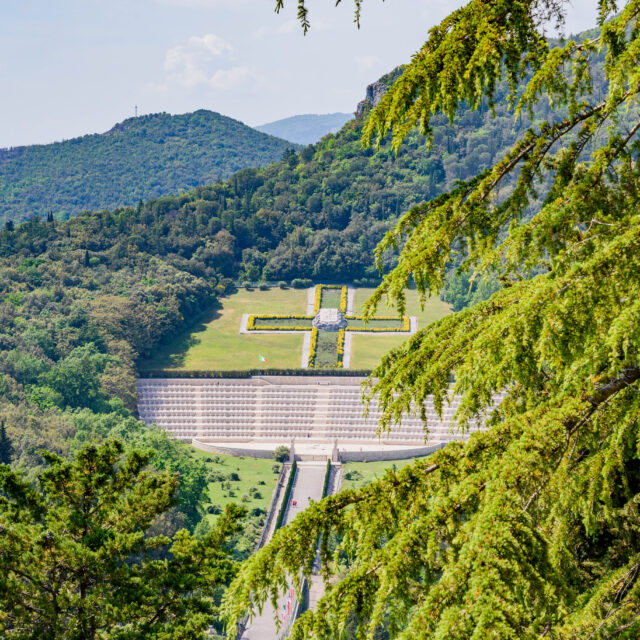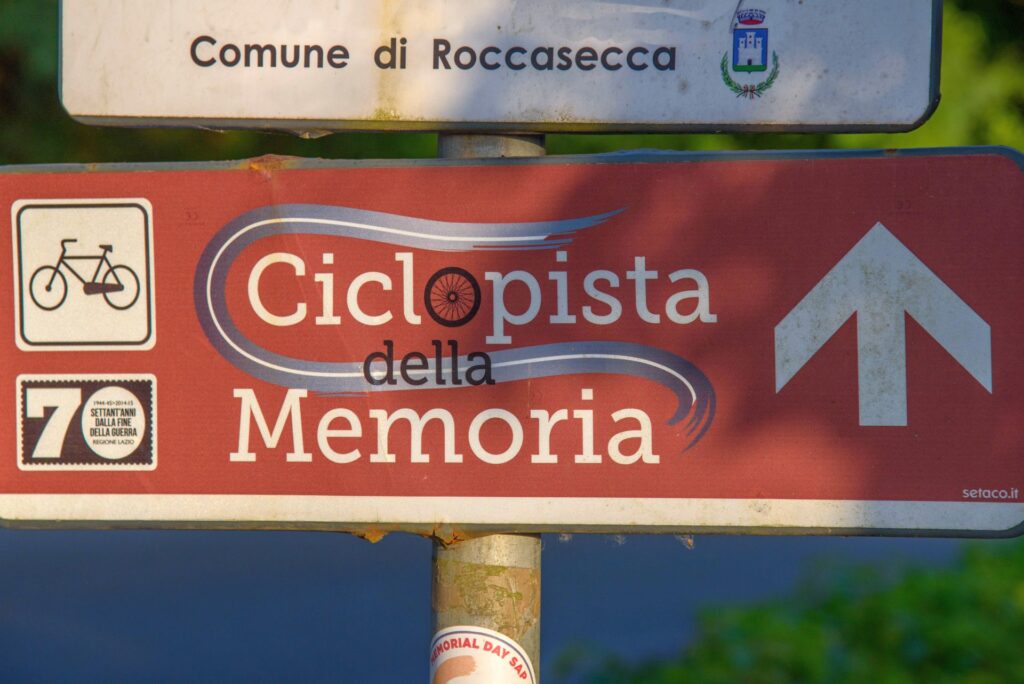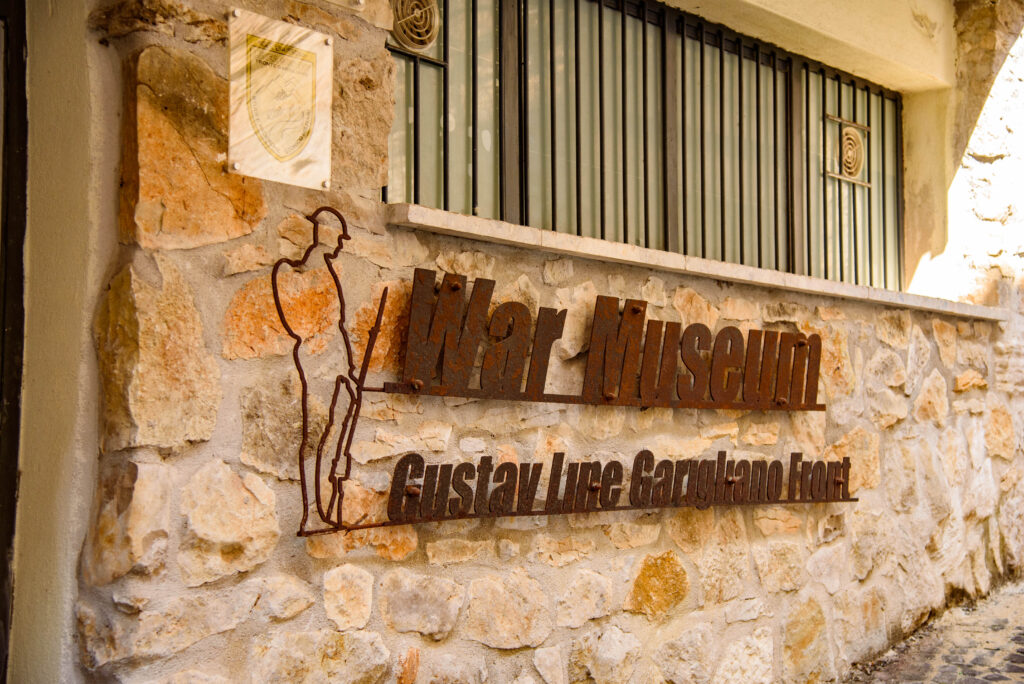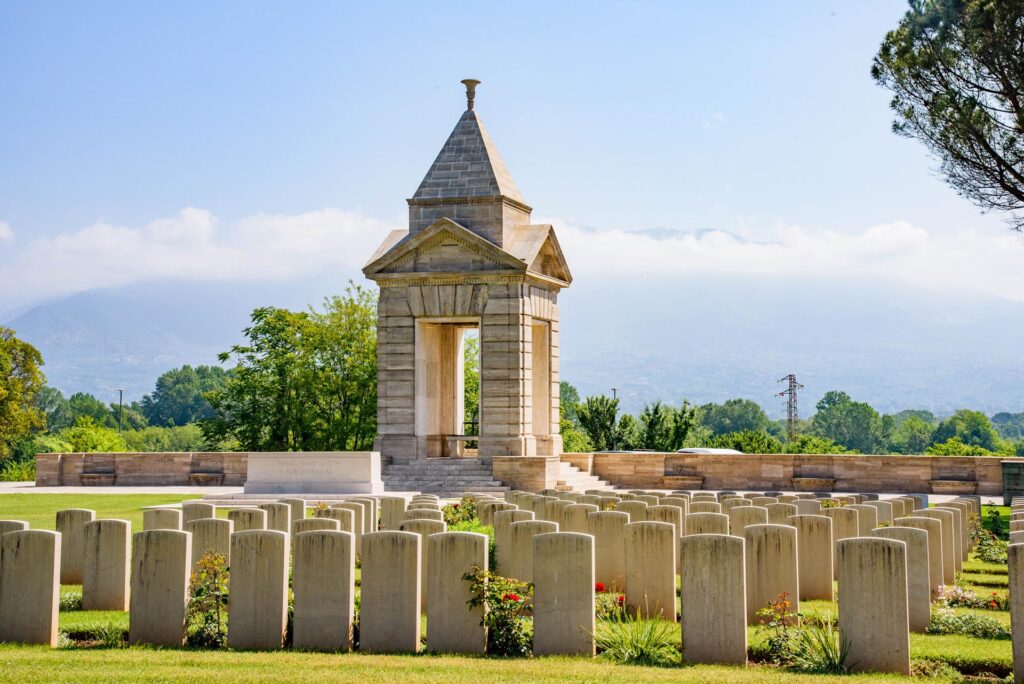WW II – World War II
Cassino
The Polish War Cemetery and Memorial Museum of the II Polish Army Corps
The Polish War Cemetery is located on the slopes of Monte Cassino, between quota 445 and the abbey; it houses the graves of 1,052 soldiers of the Second Polish Army Corps who died during the Battle of Monte Cassino, between January and May 1944, fighting to liberate the abbey from the German defenders who had established themselves inside the abbey after the bombing on 15 February 1944. On the morning of 18 May 1944, Polish troops finally entered the ruins of the abbey and hoisted their flag, declaring the end of the battle.
The Memorial also contains the grave of Władysław Anders, the general who led Polish troops, died in exile in London in 1970 and was buried among his soldiers by his will. In 2011, the Cemetery also received the ashes of his wife, Irena Renata Anders.
The construction of the Polish Cemetery began in 1944 and was completed in 1946, according to the project of architects Wacław Hryniewicz and Jerzy Skolimowski. The official inauguration took place on 1 September 1945 with a ceremony held in Catholic, Orthodox, Evangelical and Jewish rites, which was attended by members of the Polish government-in-exile and commanders of the Allied armies.
In the Polish Cemetery, which is only a few hundred metres from the abbey, there are three different kinds of burials, according to the religion of the deceased: Christian crosses for Catholics, Orthodox crosses and headstones bearing the Star of David for Jewish soldiers.
At the entrance, on the left side, there is the Memorial Museum of the Second Polish Army Corps, inaugurated in 2014 on the occasion of the 70th Anniversary of the Battle of Monte Cassino and created by the Association of Poles in Italy in partnership with the Polish Embassy. The building was designed by architect Pietro Rogacien, the son of a veteran of the Battle of Monte Cassino and one of the builders of the Cemetery.
The Museum tells the dramatic story of the Polish army, from the deportations to the gulags in Siberia to the great blood contribution of Polish soldiers in the liberation of Italy, to the exile of most of them after the war.







